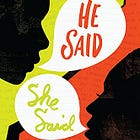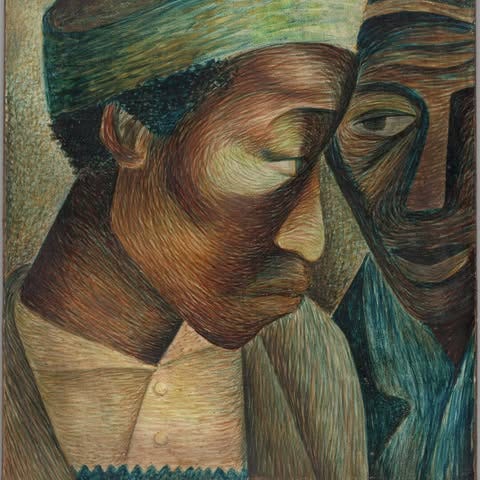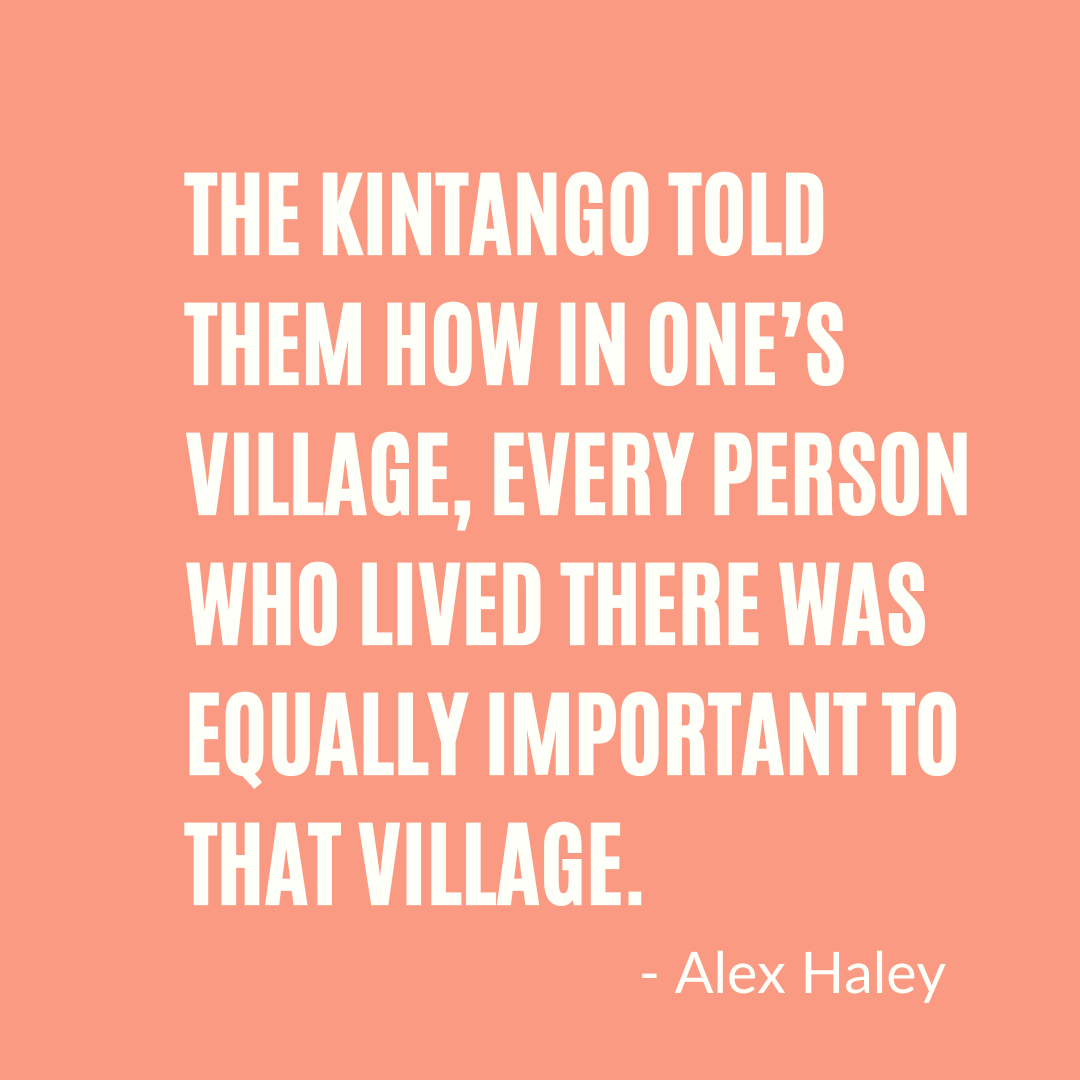Captioned Black Art
Your Curated Art Museum
“Come for the art, stay for the quotes.”
“We’re taking a stand. The students at West Charleston High School are no longer sitting idly by while our school slides down the academic gutter. You can try to take our band and our library and our drama and our teachers away, but you can’t take our souls. And our souls will never let the powers that be take the arts from us. Our souls are on fire.”
— Kwame Alexander, He Said, She Said
A Snippet:
Did you know that in May 2021, American author Kwame Alexander contributed a 4.5 star-rated recipe to Bon Appétit magazine, entitled, “Barbara’s Picnic Fried Chicken”—named after his late mother, Barbara.
Learn more (and get the recipe below):
163. “Family Sized” (2018)
“As Black people we’re just defined in a lot of ways by our trauma. There are all these stigmas. Black women are angry, we're victims, we're this or that. A lot comes with being a Black woman. Because of that, I want to show the other side of it. We're fun, we're cute, we're confident, we're literally normal people that aren't just defined by our trauma.”
— Ariel Dannielle
Did you know?
Did you know that Ariel Dannielle (a painter born and raised in Atlanta, GA) graduated from the University of West Georgia, where she received a Bachelor of Fine Arts?
Drawing from everyday experiences within her own personal life, Ariel Dannielle creates large scale paintings that depict the daily experiences of young Black women through self-portraiture.
“When I was in college trying to figure out what kind of art I was into; I didn’t know. I had tested out every kind of art class to figure out what stuck with me. I started practicing and doing self-portraits because it was easier. I would just take selfies and practice like that. And that evolved into me using myself to tell the stories I wanted to tell. I realized that I can be my own story. When I first started doing them I was just playing around. I didn’t know it was going to resonate with people. But my friends would be like, ‘that's so me!’”
“My goal with my work is to show the fun parts of being Black. A lot of the time the fun parts are not what people think of when we’re represented.”
164. “Runaways” (1993)
“In some ways, I feel like the difficulty I stage in my paintings, how hard they are to read and how you have to struggle to read them, is the struggle to understand anything about race or identity. The topics are difficult; they are not fully knowable or known. Toni Morrison talks about the idea that Blackness is not already known or fully knowable. It's reinvented constantly. The idea that Black people as a subject matter are knowable and therefore exhaustible means folks can say, ‘We've done you, we understand you. We get you.’”
— Glenn Ligon
Did you know?
Did you know that the, “Stylized figures and descriptive texts in these prints resemble the classified ads that were placed by nineteenth-century enslavers. Like the originals, they contain information that could assist in identifying a fugitive from slavery, including physical characteristics, personality traits, and clothing. Here, however, in his ‘Runaways’ piece, Glenn Ligon himself is the subject of the ads and the descriptions are provided by his friends. As with much of his work, he creates a paradox between the impersonal advertisements for lost ‘property’ and the autobiographical information given.”
165. “Friends” (1944)
“The advice I would give to young African-American artists is not to try and be important, but to make their lives important. To give of themselves.”
— Elizabeth Catlett
Did you know?
Did you know that Elizabeth Catlett, having been refused admission to Carnegie Institute of Technology because of her race, graduated with honors from Howard University, where her teachers included artist Loïs Mailou Jones and philosopher Alain Locke?
Elizabeth Catlett, raised in Washington, D.C., went on to become the first person, first woman, and first African-American to receive the MFA degree in sculpture at the University of Iowa.
In fact, in 2017, Catlett Hall, one of the largest dormitories on campus, was named in her honor.
Catlett taught at the National School of Fine Arts in Mexico City from 1958 until her retirement in 1976. Her subjects ranged from maternal images to confrontational symbols of the Black Power movement, to portraits of Martin Luther King Jr. and writer/poet Phyllis Wheatley.
To all my readers, “Thank you.”
(Breathe In . . . Breathe Out)
Don't try and be important; make life important
A STEM Grew Petals Newsletter
Next issue is next Thursday:
11am (Pacific), 2pm (Eastern)
Want Daily Quotes?
Follow on Instagram (at Captioned Black Art)
Made in Silicon Valley (with love) by author Jafari Joseph.
Copyright (C) 2025 My STEM Grew Petals Publishing. All rights reserved.
STEM Grew Petals is a reader-supported publication. To receive new posts and support my work, consider becoming a free or paid subscriber.








